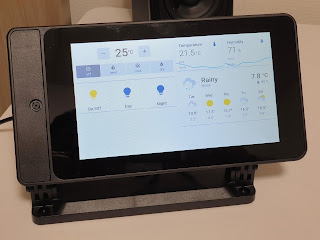Railway Museum (鉄道博物館, Tetsudō Hakubutsukan)
If you're like me, you may have an image of trains being a legacy of the industrial revolution chugging freight across country but that utilitarian image is naive or at least incomplete. Modern train and subway technology rivals aeronautics and the history of these marvels of engineering is almost romantic.
The Railway Museum (鉄道博物館, Tetsudō Hakubutsukan) has done an incredible job of showcasing the progress from the first steam locomotives in the late Edo period to the recent E6 shinkansen since it's opening in 2007.
The museum is located in Omiya, Saitama the city North of Tokyo about an hour away from central Tokyo.
From Omiya station there's a "new shuttle" line which takes you directly to the Museum station.
Early electric "limited express" trains, the one in the foreground is from 1965.
Along the balcony of the second floor is a timeline with nostalgic pieces of JR history.
Not tilt-shift
This exhibit demostrates friction and resistance to kids. The first yellow block has a felt bottom which has high-friction. The second green one here has wooden wheels and is much easier to move. The last one (not shown) has metal wheels on a track which glides effortlessly.
An exhibit showing how wheel shape naturally stabilizes and steers the train without having to rely on flanges which add stress and friction.
Several metal bars in varying shapes (flat bar, square bar, I-beam, rail track) to demonstrate flexure and elasticity.
A working rail switcher. I had an idea how this worked but never saw one operate before.
And some larger simulators for patrons.
The Railway Museum (鉄道博物館, Tetsudō Hakubutsukan) has done an incredible job of showcasing the progress from the first steam locomotives in the late Edo period to the recent E6 shinkansen since it's opening in 2007.
The museum is located in Omiya, Saitama the city North of Tokyo about an hour away from central Tokyo.
From Omiya station there's a "new shuttle" line which takes you directly to the Museum station.
British-built locomotive #1 from 1871. I wonder how hard it must have been to save all these trains from being turned into ships and planes for the war.
In front of most exhibits are explanations in Japanese but also QR codes in which is embedded the English translation (not just a link, actual text). Go ahead, try scanning this code now.
The centerpiece of the Museum is the JR's last steam locomotive on a working railway turntable that rotates on a schedule. I didn't stick around to see it move.
Early electric "limited express" trains, the one in the foreground is from 1965.
Here's the cockpit of the second train in the picture above. Notice the cutout between the 4 dials? It's for a precision Seiko pocketwatch made for JR for synchronized time to prevent collisions. Amazingly these watches are still used till today in the same cutout in even the most high-tech cockpits like that on the Yamanote line.
The passenger compartment in one of the limited express trains. Doesn't look so different from modern trains.
...unlike this passenger car from the 1930s
Ah, finally got to the shinkansens. While this series 200 was a beauty, I can't believe I missed the series 0 which was just behind it.
Along the balcony of the second floor is a timeline with nostalgic pieces of JR history.
Further down past the timeline is a room with the largest and most intricate model train set I've seen. I counted 4 trains running simultaneously though probably on different tracks.
Not tilt-shift
On the other side of the museum is a learning zone primarily geared towards children but interesting even for me. The zone is full of exhibits explaining many parts of the train and even the physics behind it.
A pantograph to maintain constant electrical conductivity with the live cable above.
This exhibit demostrates friction and resistance to kids. The first yellow block has a felt bottom which has high-friction. The second green one here has wooden wheels and is much easier to move. The last one (not shown) has metal wheels on a track which glides effortlessly.
An exhibit showing how wheel shape naturally stabilizes and steers the train without having to rely on flanges which add stress and friction.
Several metal bars in varying shapes (flat bar, square bar, I-beam, rail track) to demonstrate flexure and elasticity.
A working rail switcher. I had an idea how this worked but never saw one operate before.
Between the two sides of the museum are rooms with larger nostalgic pieces preserved from decommissioned stations.
...as well as what I suspect is a training room with simulators
And some larger simulators for patrons.
All in all it was an enjoyable experience and the exhibits were well maintained. For more information, checkout the official website which has surprisingly good English guidance.



































This comment has been removed by a blog administrator.
ReplyDelete